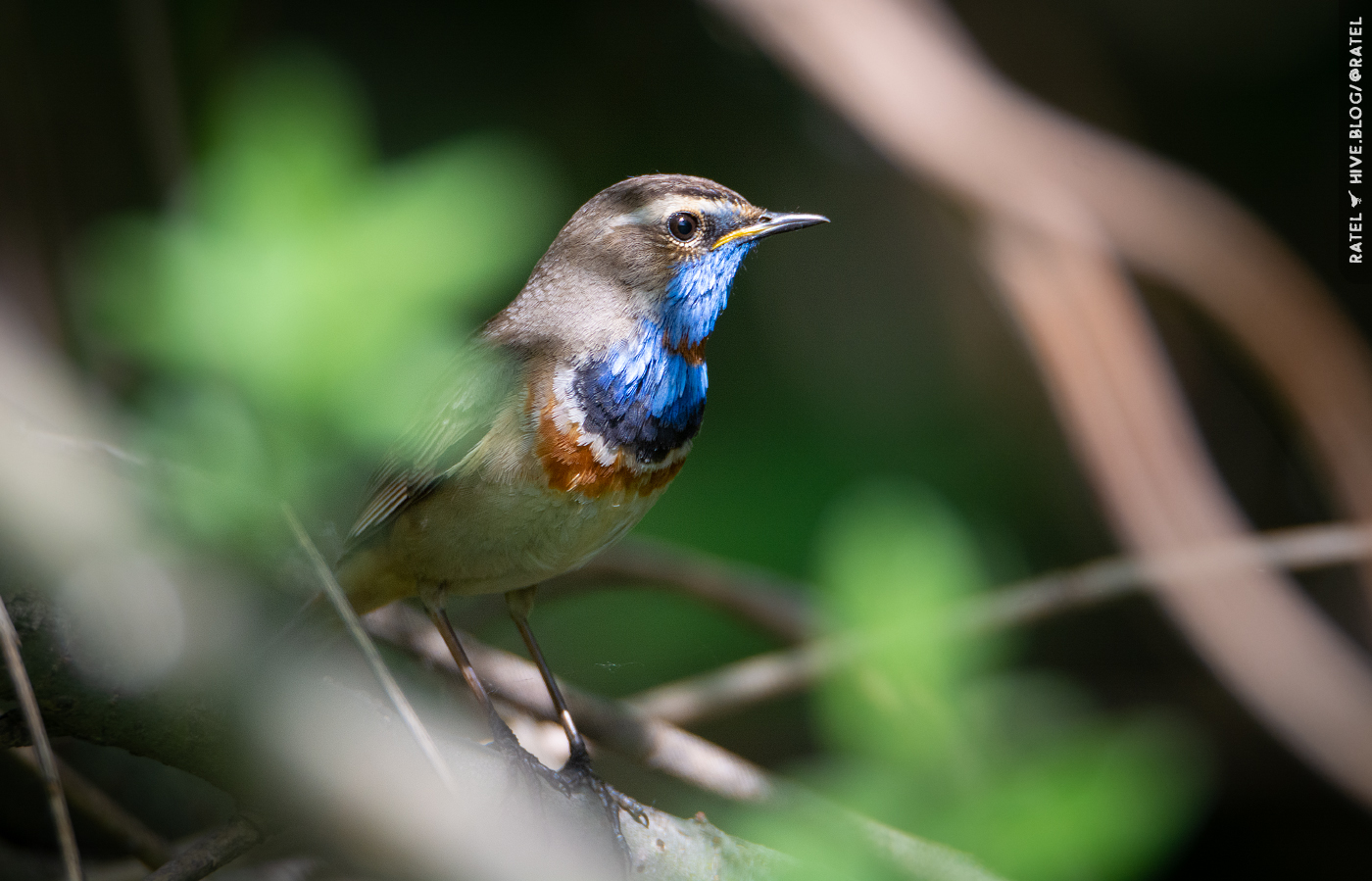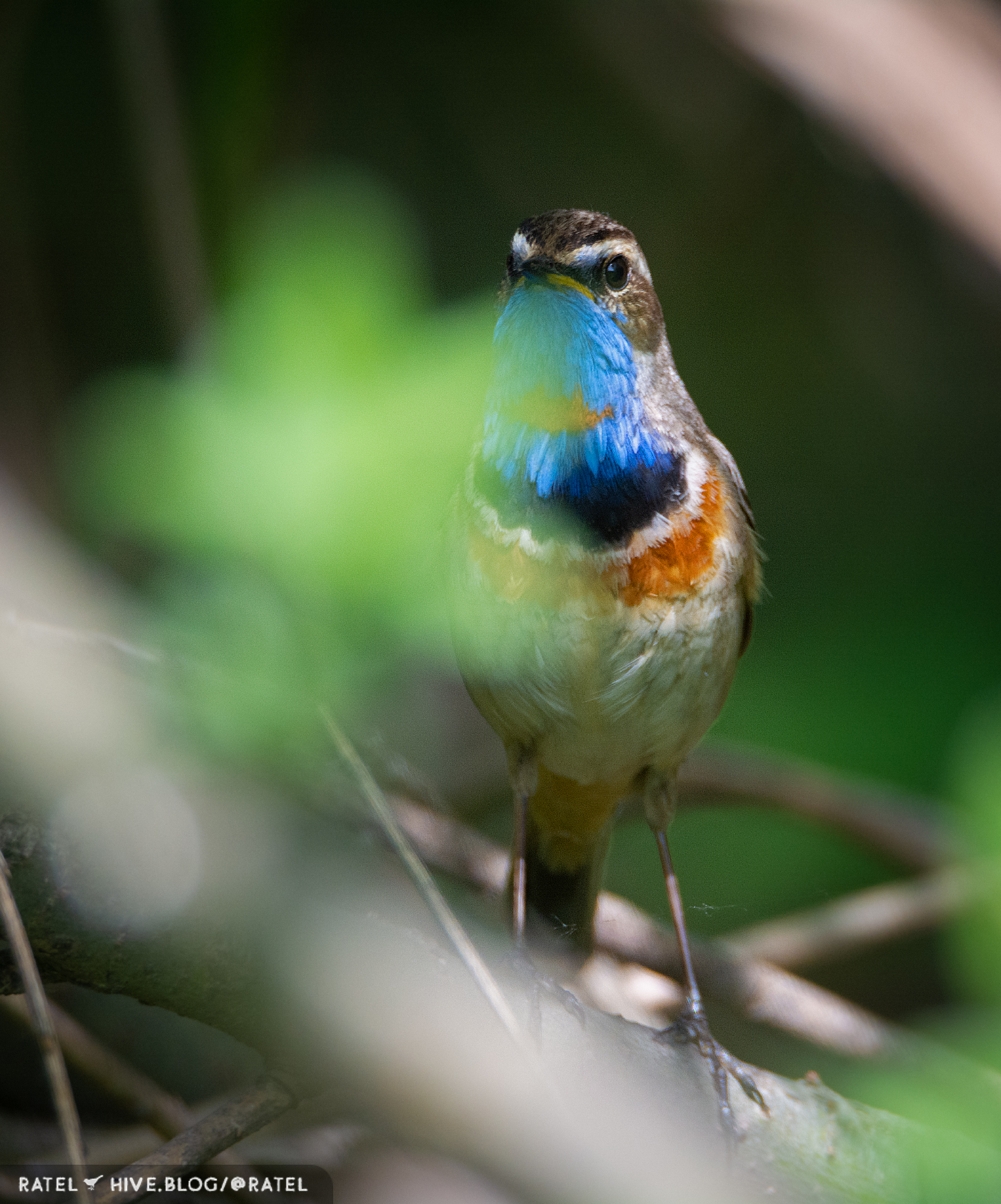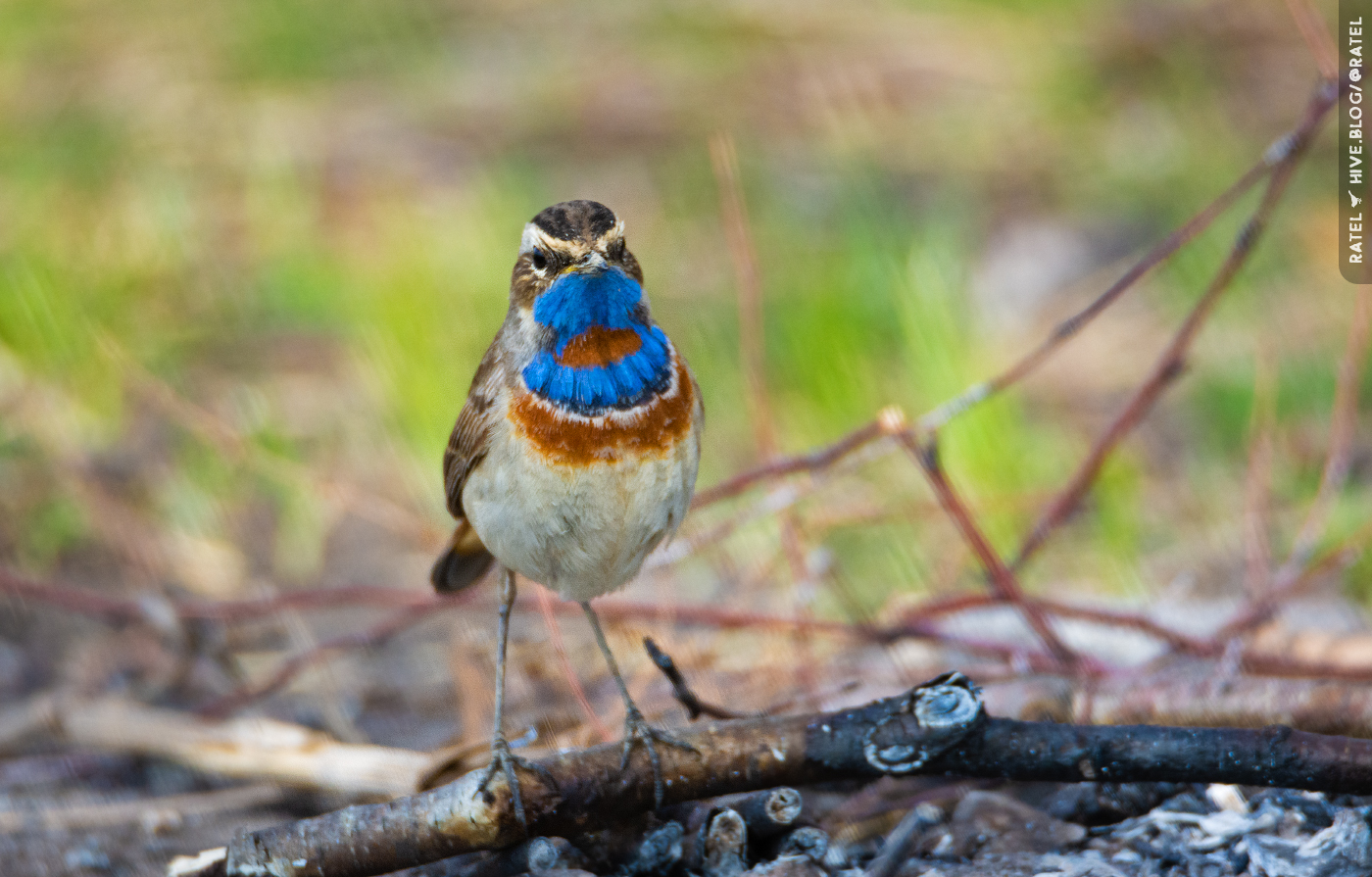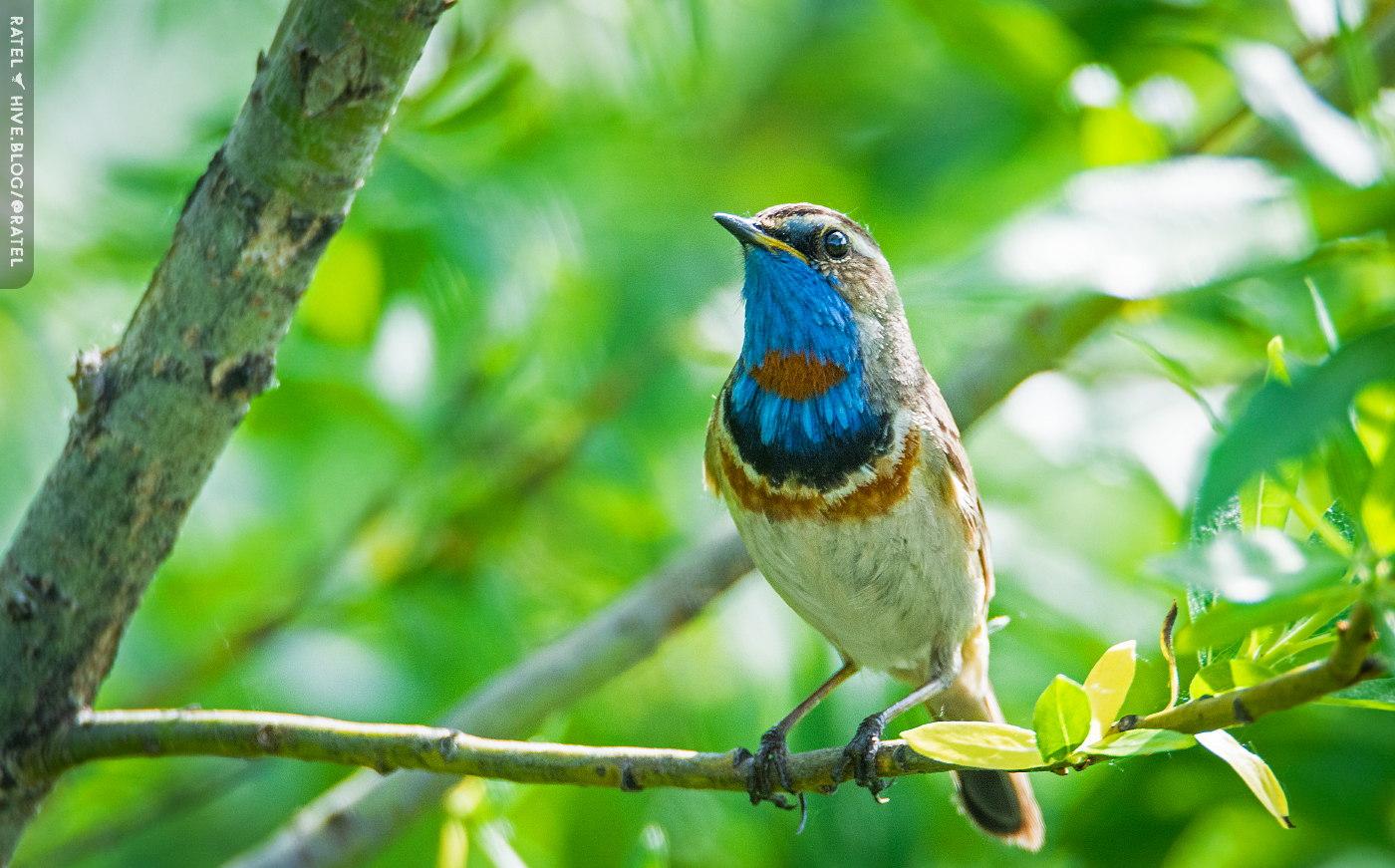
🦉 The bluethroat (Luscinia svecica)
- Luscinia (lat.) Nightingale
- svecica suecicus (lat.) Swedish; the name svecica, according to the history of the description, is not a toponym, but is given for the color of the male's chest:
Olof Rudbeck junior, Swedish botanist and birdwatcher, mentor to Carl Linnaeus, having discovered the bluethroat in 1695 in Lapland, he gave it the name Avis Carolina in honor of the Swedish king Charles XI and the blue-yellow Swedish flag (in those days the yellow color on the flag was more reddish), and K. Linnaeus in 1758, when the absolute power of the monarchy in Sweden was no longer, considered the name svecica more correct than carolina (Jobling, 2010)

I like to meet these elegant, beautiful nightingales at the end of April in the neighboring region, in the steppe zone in flooded meadows. There are always a lot of them there; they love to spend time in the dense thickets of cattails and reeds.

They arrive in my region after about a week. And they live near the coast, where bushes grow. And as you might guess, the bird loves bushes. It lives and nests there.
At this time, the males actively sing while sitting deep in the bushes, but since there are no leaves yet, they can be seen. And if you turn on their voices on the phone, the males jump out to look at those who have arrived on their territory and begin to sing even more actively.

| Camera | Lens |
|---|---|
| Nikon D5200 | Tamron SP AF 150-600mm f/5-6.3 Di VC USD |